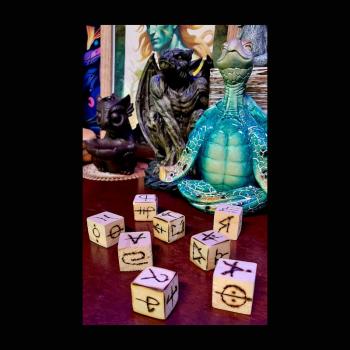By Father Mike Boutin
 Next Sunday, Dec. 20th, is the Fourth Sunday of Advent. The Sunday readings will be taken from Cycle C featuring the Gospel of Luke, and the daily Mass readings from Year 2.
Next Sunday, Dec. 20th, is the Fourth Sunday of Advent. The Sunday readings will be taken from Cycle C featuring the Gospel of Luke, and the daily Mass readings from Year 2.
Don't forget to announce the Christmas Mass schedule this weekend. It may also be worth reminding parishioners how busy and chaotic the first Christmas Eve Mass can be and to seriously encourage them to consider one of the other Masses, especially those of Christmas Day.
The liturgical color for the season of Advent is violet. In order to distinguish between the season of Advent and the penitential season of Lent, the bluer hues of violet may be used during Advent. Consider using one set of violet vestments for Advent and a different color set of vestments for Lent.
Unlike Lent whose number of days is fixed at forty, Advent does not have a fixed number of days. Rather, it has a fixed number of Sundays. Advent must have four Sundays, but the number of days varies depending on the day of the week on which Christmas falls. A good visual aid for the season of Advent is the Advent wreath. If used liturgically, it should be placed in the narthex or gathering area of the church, or near the ambo, or ideally, hung over the assembly. The candles might be borne in procession following the cross or just ahead of the Book of the Gospels.
The season of Advent focuses on preparing for the three "comings" of Christ: Christ who came once for all in history at Bethlehem, Christ who will come again at the end of time as judge and ruler, and Christ who comes now in the present, in our lives, and as our food for the journey in the Eucharist. The season of Advent is divided into two parts: from the first Sunday of Advent until the 17th of December, when the Church's liturgy focuses primarily on being watchful and ready for the second coming of Christ in glory, and in his present coming in our world, and then from the 17th of December until the Christmas Eve Masses, when the Church's liturgy focuses on getting ready for the first coming of Christ at Bethlehem which we recall at Christmas. It is most appropriate to refrain from using the O antiphons (on which "O Come, O Come Emmanuel") is based until the second part of the season of Advent, from December 17-24th, since each of the verses of "O Come, O Come Emmanuel" is one of the antiphons from Evening Prayer for each of those seven days.
Here are a couple of great websites to learn more about Advent from Creighton University and from the USCCB.
Click here for next Sunday's readings.
Here are a few good sites for exegesis (an explanation of what the biblical texts are trying to say):
The Center for Liturgy at St. Louis University
General Intercessions (Prayers of the Faithful):
The general intercessions at Mass should be written in the community that will pray them. Don't rely on canned prayers. Your community deserves someone who will pray about what this particular community's needs are this week, and then help them to articulate their needs and the needs of the larger community.
General intercessions should be just that: general enough that everyone can pray them. Prayers for the world, for the local community, for the sick, for peace, and for the dead should be numbered among the prayers you articulate. Adding a list of the local sick and deceased is a good way to make these prayers the prayers of this local community. Here are some general principles and a good example of general intercessions for next Sunday.
When I am preparing to preach, my process includes a number of pieces: 1) prayer with the scriptures 2) a weekly Bible study with parishioners on Tuesday morning that forces me to interact with the texts before Friday! 2) looking at a few different "homily helps" not in order to use a canned homily (honestly, I've never done that), but instead, sometimes to find a different angle, or a starter story, or some particularly useful insight.




